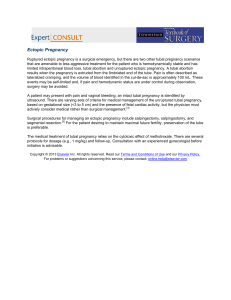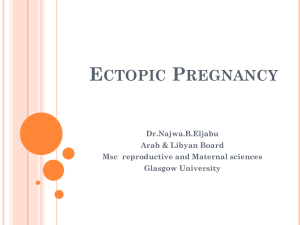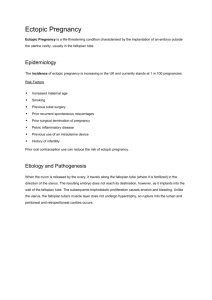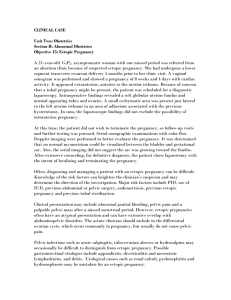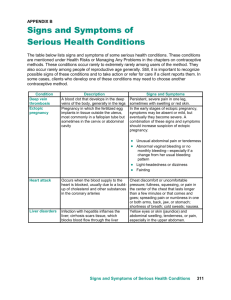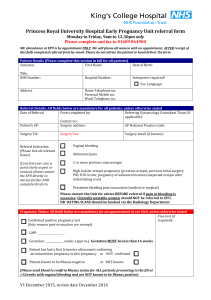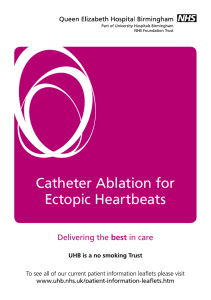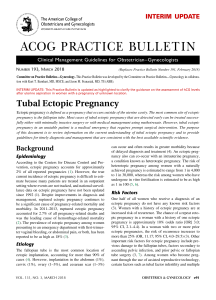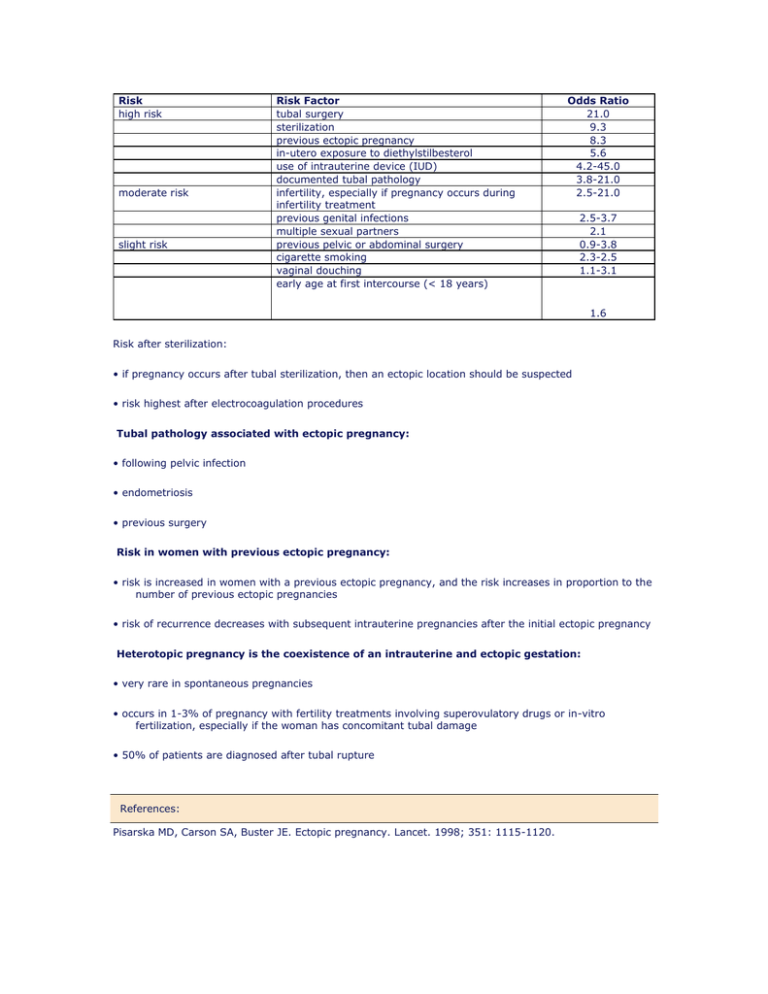
Risk
high risk
moderate risk
slight risk
Risk Factor
tubal surgery
sterilization
previous ectopic pregnancy
in-utero exposure to diethylstilbesterol
use of intrauterine device (IUD)
documented tubal pathology
infertility, especially if pregnancy occurs during
infertility treatment
previous genital infections
multiple sexual partners
previous pelvic or abdominal surgery
cigarette smoking
vaginal douching
early age at first intercourse (< 18 years)
Odds Ratio
21.0
9.3
8.3
5.6
4.2-45.0
3.8-21.0
2.5-21.0
2.5-3.7
2.1
0.9-3.8
2.3-2.5
1.1-3.1
1.6
Risk after sterilization:
• if pregnancy occurs after tubal sterilization, then an ectopic location should be suspected
• risk highest after electrocoagulation procedures
Tubal pathology associated with ectopic pregnancy:
• following pelvic infection
• endometriosis
• previous surgery
Risk in women with previous ectopic pregnancy:
• risk is increased in women with a previous ectopic pregnancy, and the risk increases in proportion to the
number of previous ectopic pregnancies
• risk of recurrence decreases with subsequent intrauterine pregnancies after the initial ectopic pregnancy
Heterotopic pregnancy is the coexistence of an intrauterine and ectopic gestation:
• very rare in spontaneous pregnancies
• occurs in 1-3% of pregnancy with fertility treatments involving superovulatory drugs or in-vitro
fertilization, especially if the woman has concomitant tubal damage
• 50% of patients are diagnosed after tubal rupture
References:
Pisarska MD, Carson SA, Buster JE. Ectopic pregnancy. Lancet. 1998; 351: 1115-1120.


